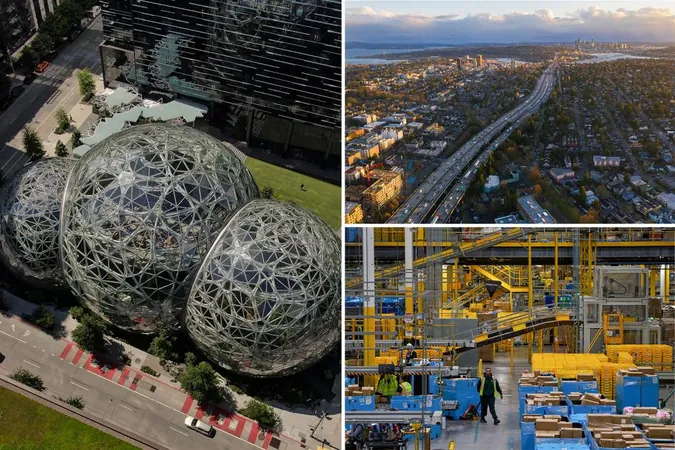
Seattle Braces for Major Traffic Congestion as 50,000 Amazon Workers Return to the Office Full-Time
2025-01-02
Author: Ken Lee
As of Thursday, Seattle is preparing for a self-inflicted traffic conundrum with the return of 50,000 Amazon employees to their corporate headquarters. The call from CEO Andy Jassy for workers to step back into the office full-time is set to add to the already congested roadways of the Emerald City.
Transportation officials have issued dire warnings of impending gridlock and extended commute times as these employees gradually shift from a largely remote work routine back to an in-office schedule five days a week. Aisha Dayal from the Washington State Department of Transportation commented, "With more people on the road, it's crucial for commuters to factor in extra travel time."
Drivers like Vera Akolo, who navigates Seattle's notorious traffic daily, have voiced their concerns, stating, "Yeah, this is a reminder it’s not going to be great,” when it comes to navigating the increased number of vehicles on the roads.
Amazon’s impact on Seattle's traffic has been significant, evident in the 35% decrease in driving speeds on vital routes like I-90 after the hybrid work model was instituted earlier this year. The company's headquarters is located in downtown Seattle, bolstered by satellite offices in the nearby Metropolitan Park and the Urban Innovation Center, along with additional locations in Bellevue—where Amazon was originally founded by Jeff Bezos.
Despite the inconveniences for commuters, there’s a silver lining. Amazon has outlined several commuter benefits aimed at easing the transition back to office life, including funded public transportation options, free shuttle services, and assistance for carpools and bikers. Furthermore, local businesses are expected to thrive from the influx of employees returning to in-person work, as they have suffered from a significant decline in foot traffic during the pandemic.
Statistical data from the Census Bureau highlights Seattle's unique position in the remote work landscape: it led the nation with 31.3% of its workforce working from home during 2019 to 2023—equating to over 140,000 employees primarily in the tech industry. However, after years of isolation, recent trends show that this percentage has dropped to just over 20% in 2023, indicating a shift back towards workplace engagement.
The city also stands out for its robust economic recovery; according to the US Bureau of Economic Analysis, the Seattle-Tacoma-Bellevue area experienced the fastest growth in gross domestic product (GDP) among large U.S. metropolitan areas in 2023, with a remarkable 6.2% increase, culminating in a total GDP of $487.8 billion.
While the urban landscape may see frustrations in traffic, there’s hope on the horizon with a thriving economy and a gradual return to normalcy for local businesses. Will Seattle's infrastructure be able to cope with this sudden surge in commuters? Only time will tell.




 Brasil (PT)
Brasil (PT)
 Canada (EN)
Canada (EN)
 Chile (ES)
Chile (ES)
 Česko (CS)
Česko (CS)
 대한민국 (KO)
대한민국 (KO)
 España (ES)
España (ES)
 France (FR)
France (FR)
 Hong Kong (EN)
Hong Kong (EN)
 Italia (IT)
Italia (IT)
 日本 (JA)
日本 (JA)
 Magyarország (HU)
Magyarország (HU)
 Norge (NO)
Norge (NO)
 Polska (PL)
Polska (PL)
 Schweiz (DE)
Schweiz (DE)
 Singapore (EN)
Singapore (EN)
 Sverige (SV)
Sverige (SV)
 Suomi (FI)
Suomi (FI)
 Türkiye (TR)
Türkiye (TR)
 الإمارات العربية المتحدة (AR)
الإمارات العربية المتحدة (AR)